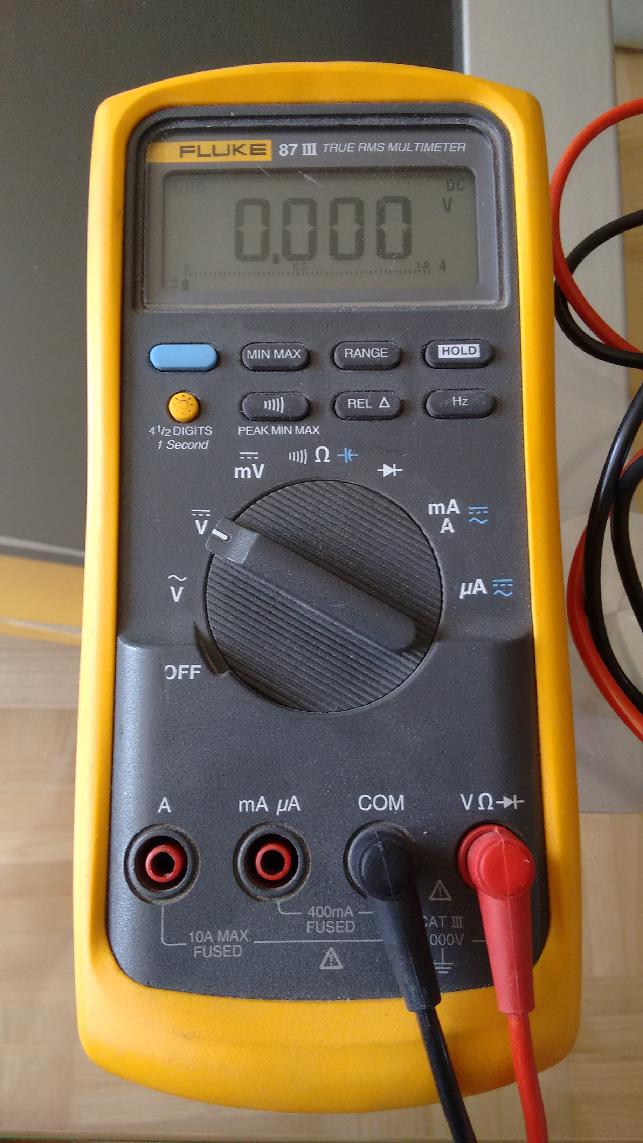Fluke 87 Series III
Not much to say about the Fluke 87 multimeter. I got mine used in the US from ebay and still had to pay around 150 USD for it. This meters are well respected within the electric industry because of the built quality, the robustness, and in my oppinion it is worth every dollar I spent on it. Especially the µA range is very useful. Over time Fluke improved this meter and released newer versions of it: my meter is revision III. The newest revision is V, which added also temperature measurement capability to the meter. But because a new Revision V meter costs around 400 USD I decided to get an used older unit for hobbiest use.

It must be noted that even thought the built quality is exceptional some of the used meters you will find are in a bad state because the were abused a lot. If for example the probe leads were moved very often and not very careful between the different input jacks then you can end up with a meter which has developed bad contact on some of the input jacks. More about this later. It seems the most common problem with the older meters is the "Fading Display" problem. Some of the digits start to fade out and are not completely dark anymore. This problem happens when the conductivity of the used "zebra strips" inside the unit between the LC display and the PCB starts to get higher due of aging effect. The internet has a lot of information about this specific topic, and there are also replacement kits available to solve this problem. Fortunetly my unit has not developed this problem until now.
Bad input Receptacle
When I received my used meter I found out that sometimes I had bad contact on the GND or V input jack. I opened the unit and found cracked solder joints on all 4 input jacks on the PCB. It seems either the meter was used very often or was treated badly. After resoldering the meter worked fine and I already thought I resolved this problem completely.But after some time the problem came back even though the solder joints are not the problem anymore. After doing some internet search I found out that this is also a common problem with the Fluke 80 series. The problem is a broken connection inside the input Receptacle part which can not be seen from the outside. This makes sense because when I turn the probe connector slowly inside the input jack I get sometimes a good contact and sometimes I do not. A Replacement input Receptacle is offered to fix this issue. But I have not fixed this issue yet, because my meter is working ok most of the time and for hobbiest use it does not matter enough right now.
